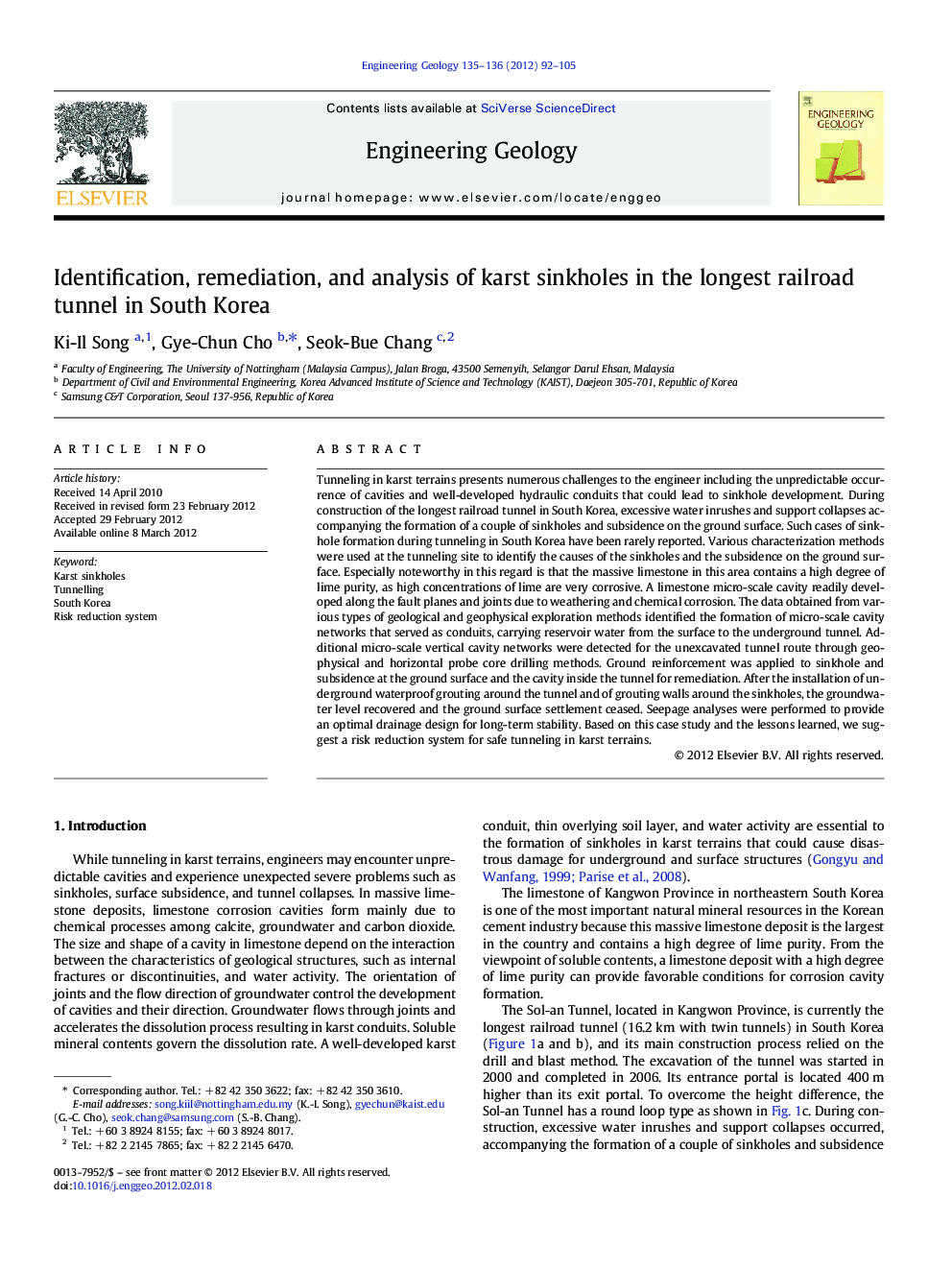| کد مقاله | کد نشریه | سال انتشار | مقاله انگلیسی | نسخه تمام متن |
|---|---|---|---|---|
| 4744009 | 1641840 | 2012 | 14 صفحه PDF | دانلود رایگان |

Tunneling in karst terrains presents numerous challenges to the engineer including the unpredictable occurrence of cavities and well-developed hydraulic conduits that could lead to sinkhole development. During construction of the longest railroad tunnel in South Korea, excessive water inrushes and support collapses accompanying the formation of a couple of sinkholes and subsidence on the ground surface. Such cases of sinkhole formation during tunneling in South Korea have been rarely reported. Various characterization methods were used at the tunneling site to identify the causes of the sinkholes and the subsidence on the ground surface. Especially noteworthy in this regard is that the massive limestone in this area contains a high degree of lime purity, as high concentrations of lime are very corrosive. A limestone micro-scale cavity readily developed along the fault planes and joints due to weathering and chemical corrosion. The data obtained from various types of geological and geophysical exploration methods identified the formation of micro-scale cavity networks that served as conduits, carrying reservoir water from the surface to the underground tunnel. Additional micro-scale vertical cavity networks were detected for the unexcavated tunnel route through geophysical and horizontal probe core drilling methods. Ground reinforcement was applied to sinkhole and subsidence at the ground surface and the cavity inside the tunnel for remediation. After the installation of underground waterproof grouting around the tunnel and of grouting walls around the sinkholes, the groundwater level recovered and the ground surface settlement ceased. Seepage analyses were performed to provide an optimal drainage design for long-term stability. Based on this case study and the lessons learned, we suggest a risk reduction system for safe tunneling in karst terrains.
► A tunnel faces sinkhole formation in karst terrain.
► The formation of micro-scale cavity networks is identified by the data obtained from various exploration methods.
► Monitoring data is utilized for successful remediation practice.
► Optimal drainage system is designed from seepage analyses.
► A risk reduction system is suggested for safe tunneling in karst terrains.
Journal: Engineering Geology - Volumes 135–136, 15 May 2012, Pages 92–105